Expertise
-
Design Research + Strategy
-
Equity-Centered Design
-
Workshop Facilitation
-
Expert Interviews
-
Targeted Universalism
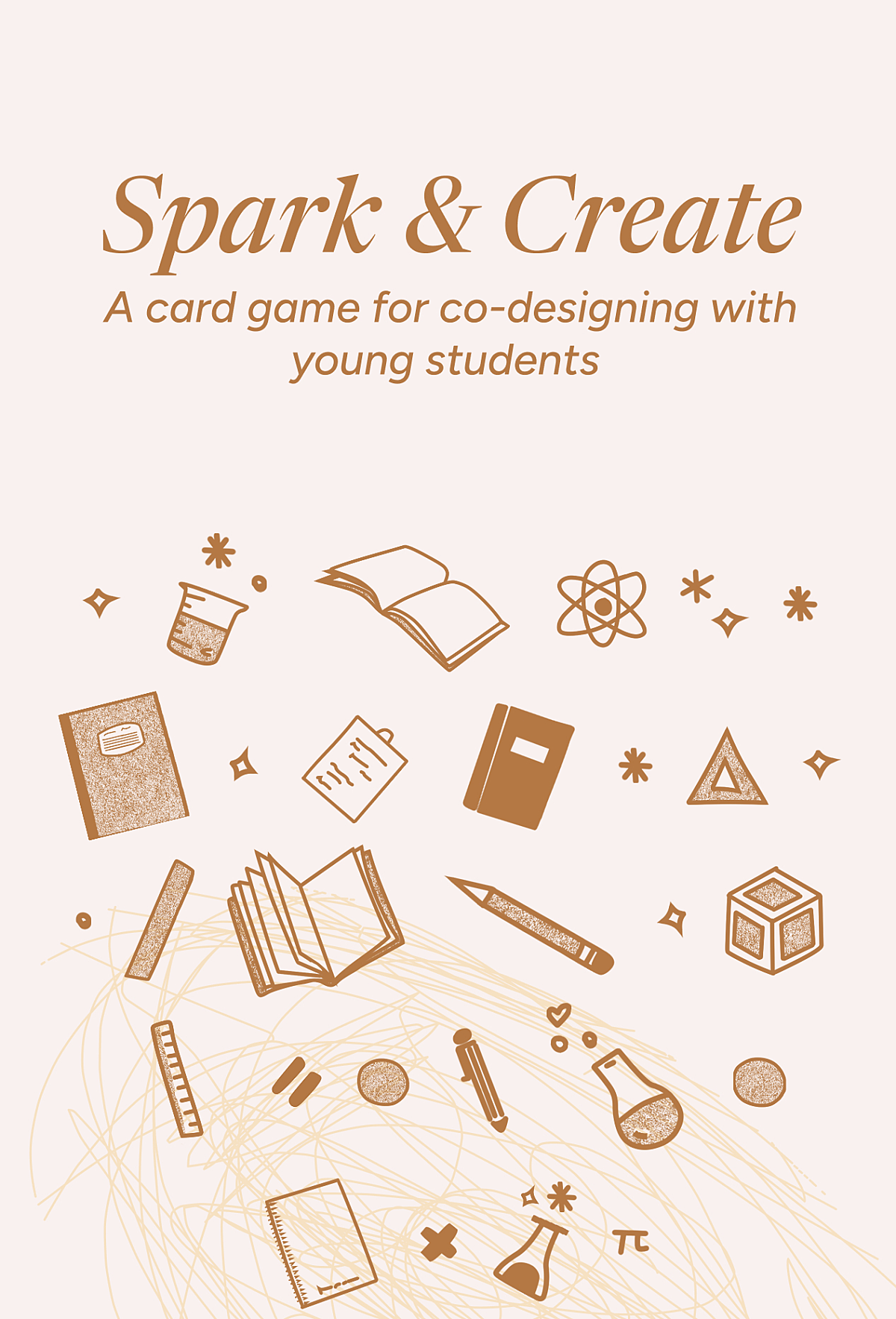
Co–design is a creative and collaborative method used in the research and product development process to understand problem spaces, and generate ideas for products, services, or policies.In the co-design process, product team and end users (co-designers) share equal responsibility in problem definition and ideation. When facilitated well, product designers and researchers ensure that ideation, research insight interpretation and concept decision making power is shared equally or shifted to the co-designers, centering their perspectives, feedback and ideas. Many organizations recognize the value of co-designing to develop inclusive and equitable products but often face challenges when it comes to initiating and facilitating those sessions, especially when it involves engaging students between the ages of 7-12 years. Teams also struggle engaging students from priority groups such as Black and Latine, students with disabilities, low income, and multilingual students and English language learners; students who have been historically excluded from the design process. Recognizing an opportunity to assist product teams in developing more equitable products, the Gates Foundation engaged Optimistic Design for our expertise in equity-centred design research to understand the challenges that product teams faced, and use those insights to explore avenues for empowering them to center the needs and assets of priority students in the design of educational technology products. |
““It would be hard to know if there was something that was unclear because of the way we've designed something or because of the way we phrased something or if there's a language barrier there.”Product Team H
The OpportunityProduct teams want to incorporate co-design in their research design practice, but don’t know where to start, particularly when it involves engaging with students between the ages of 7-12 years. Younger students have varying developmental needs and may not be able to express themselves. They may come to a co-design session tired, hungry, or just not having a good day. How can Product Teams create space for all of these things young students may be going through, and how do they even approach recruiting younger students so that they can co-design with them in the first place? Product teams need more than just a “guide” that tells them “how” to co-design, but also the tools with which they can actively engage young students. |
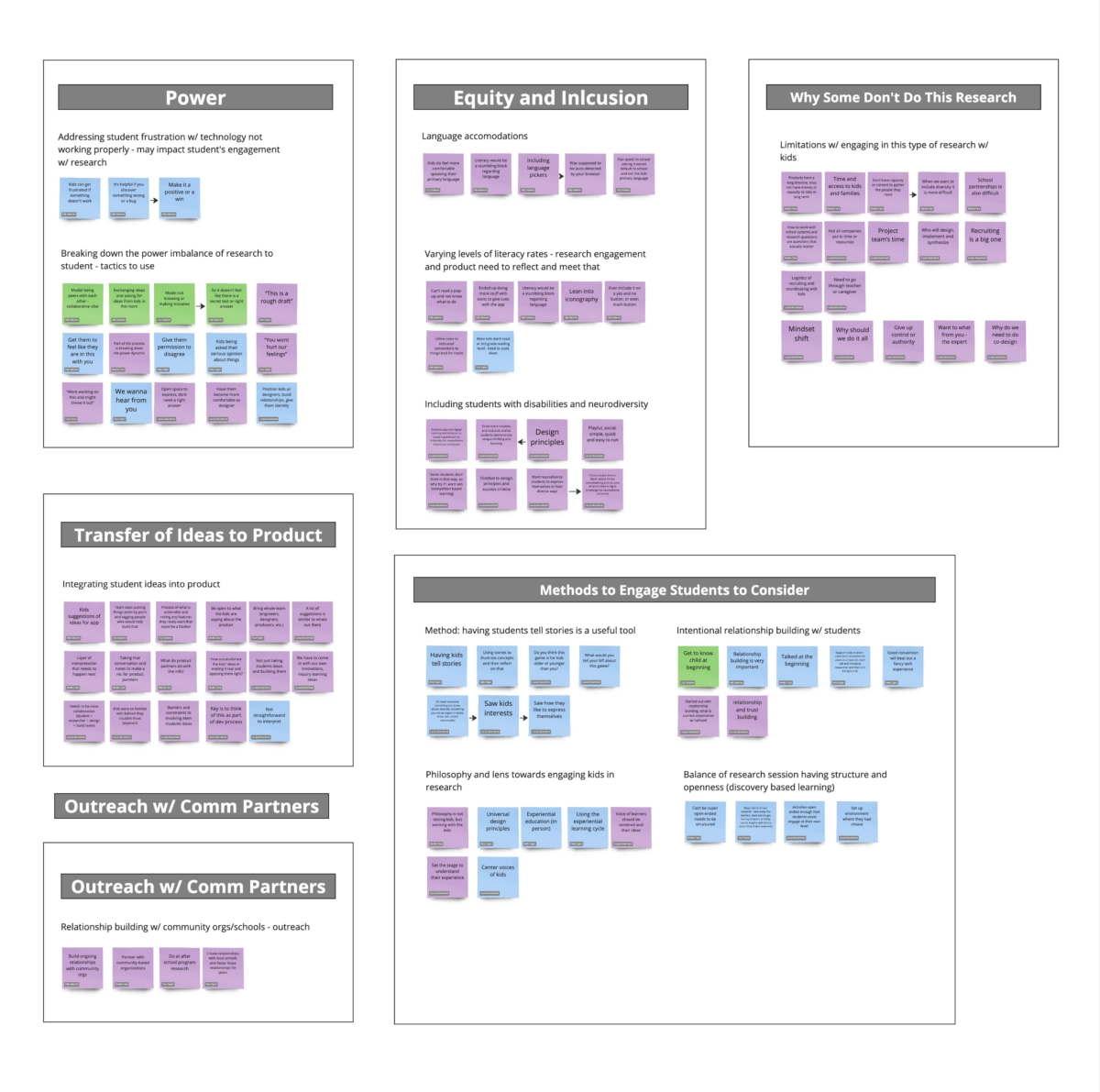
Our team iteratively crafted this toolkit by engaging with multiple stakeholders such as caregivers, teachers, school administrators, students, subject matter experts, and product teams.
Centering experience: engaging with caregivers, teachers, & school administrators
To ensure we started on the right track, we interviewed classroom teachers (with a focus on math teachers), school administrators, and caregivers of students in 3rd through 6th grades. We learned about the context of students including the needs that they see of the priority student groups and how best to engage students this age.
Subject Matter Experts
We spent time talking to subject matter experts who focused on engaging, testing, and co-designing with elementary aged students. Their expertise in this field with younger students allowed us to identify established practices for co-designing with young kids.
Product Teams
Lastly, we interviewed product teams to identify the needs and barriers they have when it comes to engaging with elementary-aged students. Additionally, we conducted in-person and virtual sessions to receive feedback on the toolkit to craft a clear and engaging approach.
Co-design with Students
Our team worked closely with the KidsTeam at the University of Washington to design a session where students co-designed how they prefer adults work with them. It wouldn't be a toolkit about co-designing if we didn't co-design it with students!
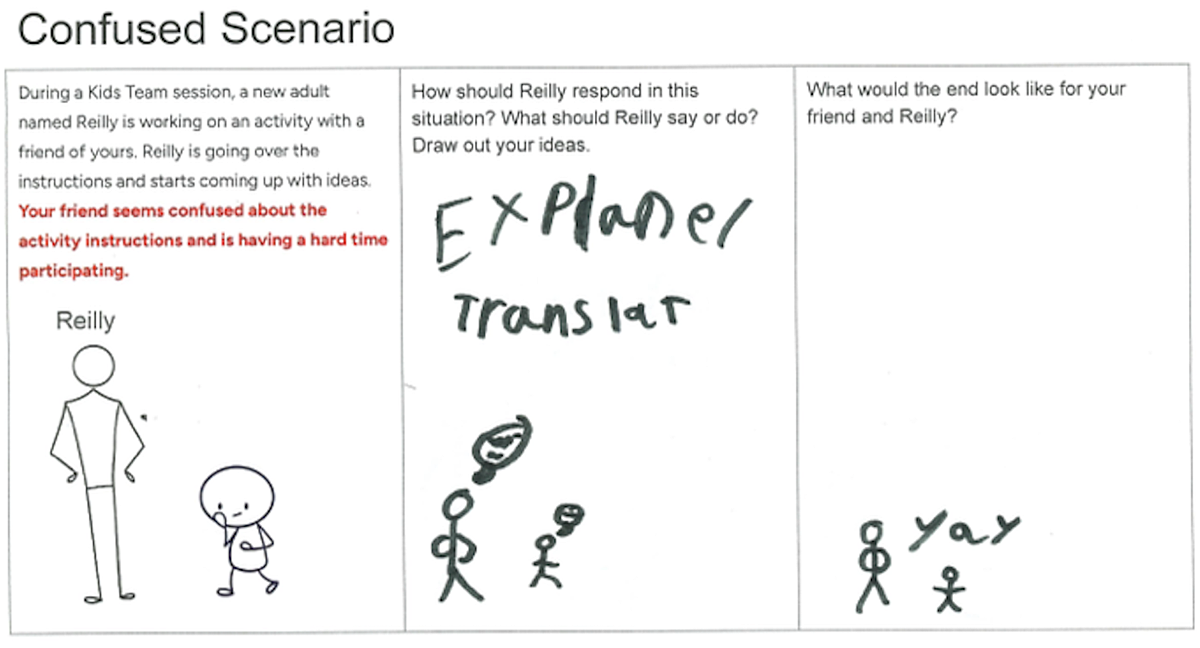
““I think it's building that relationship in all seriousness. Whether it's a team's meeting with them [students] or seeing them in person. I think it's building that relationship and rapport and just asking their opinion because kids nowadays, a lot of times don't think they have a voice or a choice.”Principal P
From the collaborative and iterative work our team conducted, we ultimately developed Spark & Create: A guide & card game to co-designing with young students.
The output contains two separate deliverables.
This toolkit can be used by product owners, UX designers, researchers, entrepreneurs, etc., who want to engage and understand the learning and lived experiences of young students they are working with and designing tools for. No matter if you are an expert in this space, or a beginner, you will take away something from this toolkit that will ultimately support the work you do!
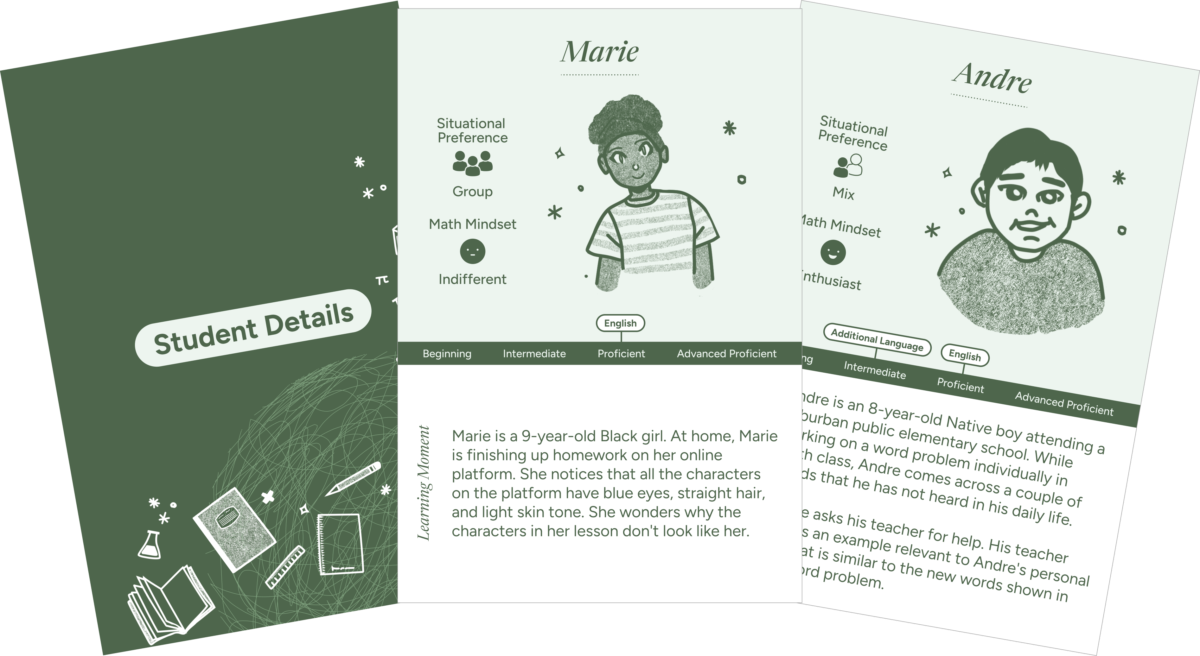
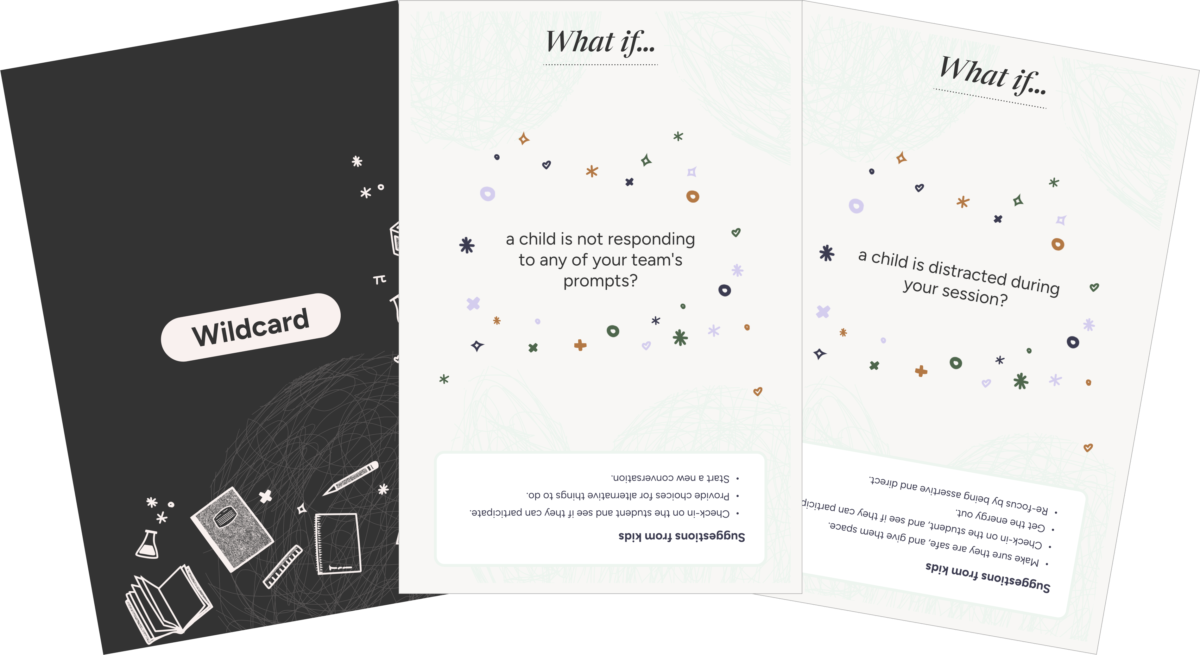
22
Interviews
7
Student Archetypes
13
Student Co-Designers
9
Technique Cards
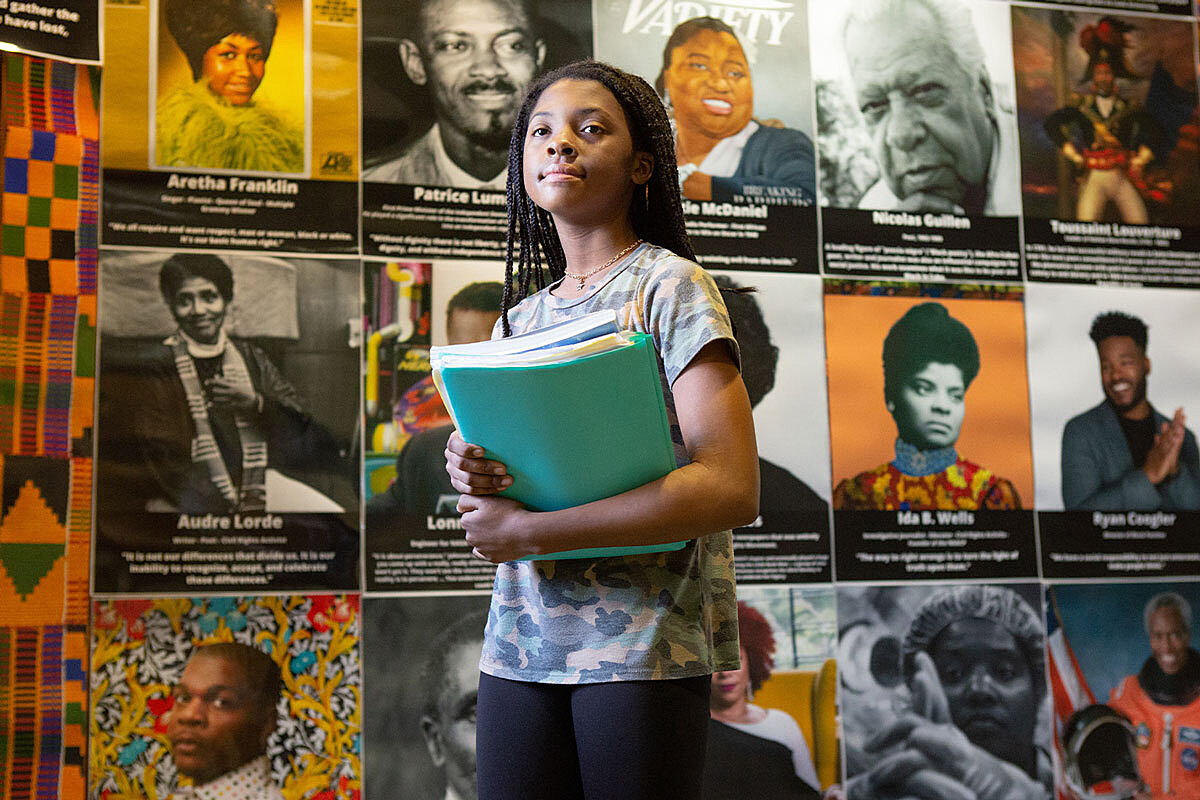
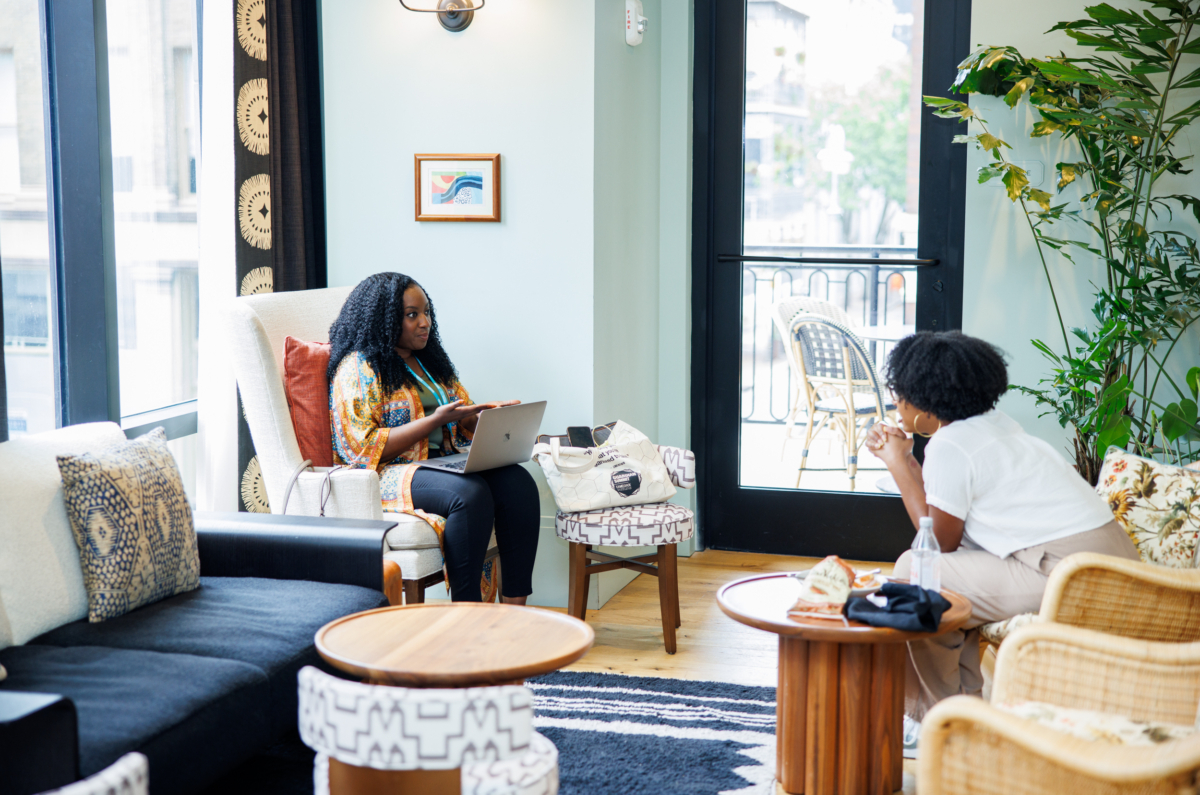
Let’s Design the Future of Learning, Together
We're using cookies to deliver you the best user experience. Learn More
It’s a form. You know what to do. But if not, send us an email at info@optimistic.design.